What is the definition of Using False Compartments to Conceal Drugs under Health and Safety Code 11366.8 HS?
Every person who possesses, uses, or controls a false compartment with the intent to store, conceal, smuggle, or transport a controlled substance within the false compartment; i or who designs, constructs, builds, alters, or fabricates a false compartment for, or installs or attaches a false compartment to, a vehicle with the intent to store, conceal, smuggle, or transport a controlled substance.
What is the mental state required for a violation of Health and Safety Code 11366.8 HS?
The mental state required for a violation is knowingly. Knowingly is the purposeful intent to complete an objective. It is a conscious understanding of the circumstances required to achieve the result; with the objective acceptance of the natural and probable consequences associated in desiring the result. As applied under Health and Safety Code 11366.8 HS, a person must specifically intend to create, build, fabricate or install a false compartment in a vehicle in order to transport, smuggle, store, possess, control, have access to, or use a false compartment in order to transport, smuggle or store a controlled substance: and doing so with the objective understanding of the natural and probable consequences that may result from the decision.
What is the definition of possession and control under Health and Safety Code 11366.8 HS?
Active possession refers to a personal and physical retainment. Constructive control refers to possession by authorization and direction for which possession can be assessed. Under Health and Safety Code 11366.8 HS active possession is reflected by the driver of the vehicle: having an access button to activate the compartment, observing handling the compartment, placing or installing the compartment themselves. Under Health and Safety Code 11366.8 HS constructive possession is reflected by the driver or an agent of the driver such as an installation company, relative, colleague or associate doing the same by payment or by authorization due to supervision of employment or association.
What is the definition of a false compartment under Health and Safety Code 11366.8 HS?
A false compartment is any new box, new container, new space, or new enclosure designed; a modified or altered piece installed in the original factory equipment of a vehicle that is from the original manufacture; or a compartment, space, or box that is added to, made or created to existing parts of components to be installed to conceal, hide or prevent the discovery of a controlled substance in a vehicle.
What is the definition of a vehicle under Health and Safety Code 11366.8 HS?
The term vehicle refers to cars, trucks, buses, aircrafts, boats, ships, yachts or vessels that can be utilized for either commercial or private use.
What are the penalties for a violation under Health and Safety Code 11366.8 HS?
A violation of Health and Safety Code 11366.8 HS is chargeable is either a misdemeanor or felony. If the violation concerns the possession or control of a false compartment, the violation is a misdemeanor. Punishment includes confinement not to exceed 1 year in jail, with fines not exceeding $1000 dollars. If the violation concerns the creation, installation or design of a false compartment, the violation is a felony. Punishment includes confinement not to exceed 16 months, 2 or 3 years in prison with fines not exceeding $10,000 dollars.
What is an example of a violation of Health and Safety Code 11366.8 HS?
What kinds of drugs are listed to be associated under HSC 11366?
The references to drugs under Health and Safety Code 11364 HS are:
(1) Opium;
(2) MDMA;
(3) Mushrooms;
(4) Psilocybin;
(5) Fentanyl;
(6) Peyote;
(7) Meth;
(8) Mescaline;
(10) GHB;
(11) Opium extracts such as CO2 base, derivatives like crumbles;
(12) PCP;
(13) Ketamine;
(14) Testosterone;
(15) Cocaine; and
(17) Heroin.
What are examples of defenses to a violation of Health and Safety Code 11366.8 HS?
If you are charged with a violation of Health and Safety Code 11366 HS call Law Mart today.
Call LAW MART for a FREE Case Review: 310-894-6440

Copyright © 2024 law – Powered by AmelCS